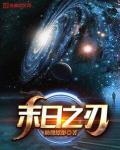Chapter 684 Artificial Earth
The Six-clawed Giant Nebula.
Ten Earth years have passed since the Homo sapiens expeditionary force conquered this place.
During this period, the expeditionary fleet's pursuit team kept hunting down the six-clawed people's escape spacecraft, and finally five years ago, they completely wiped out the remaining six-clawed people.
At this point, the six-clawed people were completely destroyed.
The war between first-level civilizations is so cruel that in order to avoid leaving hidden dangers, after defeating a civilization, they often adopt a method of annihilation to treat the defeated civilization.
If the six-clawed people defeated the Homo sapiens company, the end of humanity would be the same, which is death.
Sapiens Corporation's Strategic Analysis Office has conducted extensive analysis on the cosmic social operating model between first-level civilizations.
But no matter which kind of alien it is, it will not be easy for them to coexist peacefully with other aliens.
The reason why I came to this conclusion.
The reason is very simple. For a first-level civilization, the speed of light bottleneck is an unavoidable major problem. Under the premise that the speed of light bottleneck exists, the colonization of other planetary systems can only be carried out by local reproduction.
So why colonize other planets?
The answer is safety and racial continuity.
Take the six-clawed people for example. If they had not castrated themselves but instead concentrated on colonizing the solar system, they would have reached the solar system thousands of years ago.
Obviously, the six-clawed man missed an opportunity to change his fate.
Now the Homo Sapiens company certainly cannot follow the old path of the six-clawed people and circle around in the solar system to grow their own business. That would be courting death.
For the Giant Star Nebula, the headquarters of Sapiens Corporation has already formulated a series of development plans.
One of the most critical plans is the artificial earth plan.
This is also the reason why the expeditionary fleet was quickly reorganized into two parts after ending the annihilation war against the six-clawed people.
Currently, the expeditionary fleet has been reorganized into the "Superstar Defense Fleet" and the "Superstar Colonial Branch".
The mission of the Giant Star Colonization Branch is to utilize the resources of the Giant Star Nebula to build an artificial earth.
Building an earth is actually not difficult for the current Homo sapiens company. The key difficulty lies mainly in resources.
Although there are plenty of resources in the solar system, there is another problem, which is that we must consider the gravitational stability within the galaxy.
Obviously, the artificial earth project in the solar system is destined to not be implemented in the short term.
As for giant star nebulae, we don’t have to consider the gravitational problem of the planetary system, and we have more resources ourselves.
After the disintegration, the giant star, together with the attached natural planets, has a total amount of matter equivalent to about 1,432 Earths.
Due to the disintegration of giant stars, these materials have formed a large-scale nebula and densely packed asteroids. Together with dozens of relatively large debris split from the core of the giant stars, they can actually be mined and utilized.
If they are not mined quickly now, in about four or five hundred years, these debris will condense again into a new giant gas planet.
For the Homo Sapiens company that had worked so hard to blow up the superstar, it would be a great loss to let the superstar nebula condense again.
Therefore, the Giant Star Colonization Branch must complete the division and movement of the entire giant star nebula within a 400-year window.
According to the plan, the giant nebula will be divided into ten parts, and the mass of each part will be about 143 Earths.
This material is enough to build thousands of artificial Earths.
However, the Superstar Colony Branch did not use all its resources to build artificial earth, and artificial earth is not simply an accumulation of materials.
The 15 artificial Earths currently under construction are floating on the outskirts of the giant star nebula.
A large number of unmanned spacecraft with a length of tens of kilometers transport the mined materials out of the core area of the giant star nebula bit by bit.
Nanorobots can mine the remains of giant stars very quickly. If they work at full capacity, they can mine material equivalent to 2.4 moons every day.
On artificial earth number one.
Zheng Bai, who transferred from the expeditionary fleet to become the head of the Colonial Engineering Department, is using a synchronous robot to float in his office.
Through the huge floor-to-ceiling windows, you can see a huge dark outline in the void in the distance.
In a giant star nebula without a star, the light inside is very weak. There is only the remnants of the giant star's core. Since it is a core of heavy elements, it will produce nuclear fission and nuclear decay itself, and thus emit a weak dark red light, which is similar to the color of magma.
Therefore, giant star nebulae are very dark.
At this time, Zheng Bai was browsing the construction progress of artificial earth No. 1.
Deputy Director Andrew floated in: "Director, now artificial Earth No. 1 can enter the major construction stage."
"Yes, I know." Zheng Bai understood this clearly: "Then we should allocate as much supplies as possible to the artificial earth No. 1, is that ok?"
"no problem."
The Engineering Department naturally has a special plan for how to build an artificial earth.
Although nanorobots can mine materials from several moons in a day, transportation, deep processing, and engineering construction certainly cannot be concentrated on an artificial earth at once .
Doing so will lead to a decrease in transportation and construction efficiency. After all, the initial framework of an artificial earth will definitely not have so many spaceports and engineering projects.
Therefore, from the very beginning, the Engineering Department simultaneously launched a plan to build 15 artificial earths.
Now the artificial earth No. 1 has completed its supporting spaceport, and a large part of the outer frame has also been completed.
Now is the time to concentrate resources and complete the construction of artificial Earth No. 1.
The radius of artificial Earth No. 1 is much larger than that of the Earth, but the total amount of material used is almost the same as that of the Earth.
The reason is that there are some differences between the artificial earth and the natural earth.
For example, the work currently being done is to cast stellar cores. The raw materials are the remains of giant star cores. By filling those heavy elements into the core area of the artificial earth, a core that is almost the same size as the natural earth core can be cast.
The layer of structure that wraps the artificial core is a special material with a thickness of 300 kilometers. It can not only fix the internal core, but also use the core to generate an artificial magnetic field and generate geothermal power.
Therefore, there is no mantle in artificial earth.
The original mantle region, in addition to the huge pillars, also served as a storage area for various solid raw materials.
There are also eight planetary thrusters.
That’s right, planetary thrusters.
However, these eight planetary thrusters have not been built yet. We need to wait until the star core is cast and the artificial earth has a stable center of mass before we can build the planetary thrusters.
These planetary thrusters are huge, extending directly from the core of the star to the dome of the surface, with a length of about 6,000 kilometers and a radius of 300 kilometers.






